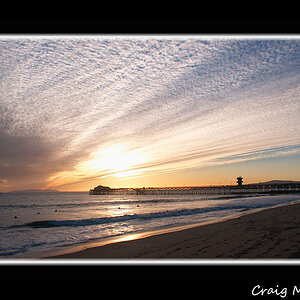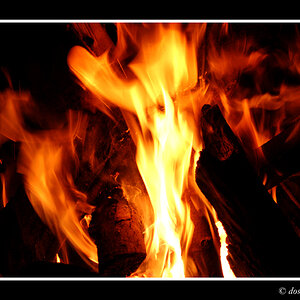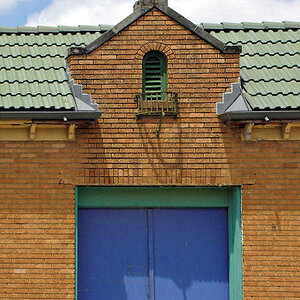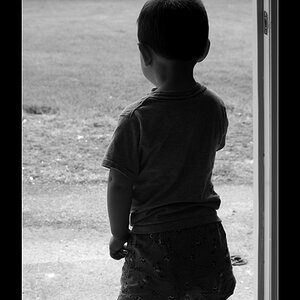Navigation
Install the app
How to install the app on iOS
Follow along with the video below to see how to install our site as a web app on your home screen.

Note: This feature currently requires accessing the site using the built-in Safari browser.
More options
You are using an out of date browser. It may not display this or other websites correctly.
You should upgrade or use an alternative browser.
You should upgrade or use an alternative browser.
What is the difference between 16 and 24 megpixels?
- Thread starter fmw
- Start date
- Joined
- Aug 15, 2013
- Messages
- 13,695
- Reaction score
- 3,369
- Location
- SE Michigan
- Can others edit my Photos
- Photos OK to edit
Only in PSAM and since it's processed, no RAW. RAW is unprocessed. HDR is processed for JPEG.I tried all the exposure modes to no avail. I normally shoot raw+jpeg. I'll try it with jpeg only since it obviously isn't going to do it with raw.
See manual page 111, 113 for examples of various bracketing modes and exposure modes.
fmw
No longer a newbie, moving up!
Exactly. HDR hates anything to do with raw recording. I assumed it could work with the jpeg I record at the same time but no. The camera has to be set to jpeg only and then the HDR process works just fine. I made one exposure. One click on the shutter produces two quickly spaced exposures and an HDR jpeg which looks pretty good. It actually works.
So the process is switch the recording mode to any jpeg only mode, set HDR on in the menu and then fire. You can choose how wide the differences in the exposures are and whether you just want a single hdr or a series of them. In the single mode, the camera reverts back to hdr off after the exposure. It doesn't provide the same flexibility or power that Photoshop does but it does work. My shed had a significantly darker and bluer sky in the background than the single exposure produced.
So the process is switch the recording mode to any jpeg only mode, set HDR on in the menu and then fire. You can choose how wide the differences in the exposures are and whether you just want a single hdr or a series of them. In the single mode, the camera reverts back to hdr off after the exposure. It doesn't provide the same flexibility or power that Photoshop does but it does work. My shed had a significantly darker and bluer sky in the background than the single exposure produced.
fmw
No longer a newbie, moving up!

Nikon D7000 16 megapixels

Nikon D7100 24 megapixels
Both these images are only half a MP each. So maybe like 1 Superpixel?

It just goes to show you how silly it is to worry about resolution for internet jpegs. I did put the crops in "view actual pixels" mode before saving them. They still show the differences well enough.
Bebulamar
No longer a newbie, moving up!
- Joined
- Mar 27, 2014
- Messages
- 259
- Reaction score
- 31
- Location
- United States
- Can others edit my Photos
- Photos OK to edit
Don't forget to account for the different image sensor makes.
The D7000 uses a Sony (not Exmor) image sensor while the D7100 uses a Toshiba made image sensor.
f some not common types of imaging and printing, the MP count of the image sensor is to a large degree meaningless.
Another major difference is the D7000 has an anti-aliasing optical low pass filter (OLPF) in front of it's Sony image sensor, while the D7100 doesn't have an OPLF in front of it's Toshiba image sensor.
With the exception of some not common types of imaging and printing, the MP count of the image sensor is to a large degree meaningless.
Note too that as MP count goes up and image sensor size remains the same, pixel size goes down. Smaller pixels collect fewer photons (develop a smaller signal) per pixel.
right, some say megapixels are "meaningless", others claim the large larger pixels in older cameras, - "fat pixels" produce better images
pity the poor photographer that only has 18 megapixels in a $100 camera
www.flickr.com/photos/mmirrorless
Damn! I paid $3000 for a 16MP camera with 1X zoom.
fmw
No longer a newbie, moving up!
Don't forget to account for the different image sensor makes.
The D7000 uses a Sony (not Exmor) image sensor while the D7100 uses a Toshiba made image sensor.
f some not common types of imaging and printing, the MP count of the image sensor is to a large degree meaningless.
Another major difference is the D7000 has an anti-aliasing optical low pass filter (OLPF) in front of it's Sony image sensor, while the D7100 doesn't have an OPLF in front of it's Toshiba image sensor.
With the exception of some not common types of imaging and printing, the MP count of the image sensor is to a large degree meaningless.
Note too that as MP count goes up and image sensor size remains the same, pixel size goes down. Smaller pixels collect fewer photons (develop a smaller signal) per pixel.
right, some say megapixels are "meaningless", others claim the large larger pixels in older cameras, - "fat pixels" produce better images
pity the poor photographer that only has 18 megapixels in a $100 camera
www.flickr.com/photos/mmirrorless
Damn! I paid $3000 for a 16MP camera with 1X zoom.
I'm sure it is a nice one.
beagle100
Been spending a lot of time on here!
- Joined
- Mar 31, 2015
- Messages
- 2,073
- Reaction score
- 546
- Can others edit my Photos
- Photos OK to edit
Damn! I paid $3000 for a 16MP camera with 1X zoom.
I'm thinking you way overpaid "per megapixel" zoom !
www.flickr.com/photos/mmirrorless
Bebulamar
No longer a newbie, moving up!
- Joined
- Mar 27, 2014
- Messages
- 259
- Reaction score
- 31
- Location
- United States
- Can others edit my Photos
- Photos OK to edit
Damn! I paid $3000 for a 16MP camera with 1X zoom.
I'm thinking you way overpaid "per megapixel" zoom !
www.flickr.com/photos/mmirrorless
I guess so! It was 2 and a half years ago but the price didn't drop though. It was a Nikon Df and the 50mm lens.
Solarflare
No longer a newbie, moving up!
- Joined
- May 24, 2012
- Messages
- 2,898
- Reaction score
- 395
The real difference between 16 and 24 Megapixel is more cropping potential.
The actual resolution difference is only ~20% - remember, to get twice the resolution, you need four times the pixel ! Just 20% is at the very border of what humans can still see, and you certainly cannot see it at a glance, and either way it requires that you see a 100% view - something like 1x1.5 meters.
Also, the D7000 and D71000 do not have compareable sensor technology.
The D7000 16mp sensor is from Sony.
The D7100 24mp sensor is obviously newer and from Toshiba.
The actual resolution difference is only ~20% - remember, to get twice the resolution, you need four times the pixel ! Just 20% is at the very border of what humans can still see, and you certainly cannot see it at a glance, and either way it requires that you see a 100% view - something like 1x1.5 meters.
Also, the D7000 and D71000 do not have compareable sensor technology.
The D7000 16mp sensor is from Sony.
The D7100 24mp sensor is obviously newer and from Toshiba.
Romphotog
TPF Noob!
- Joined
- Jan 24, 2008
- Messages
- 110
- Reaction score
- 0
- Location
- On planet Earth.
- Can others edit my Photos
- Photos NOT OK to edit
You need to x4 to double res. ex: 4mp x 4 = 16mp(double).
But, 24mp is not double of 16mp, it's just 4mp added to top+right. So it's 1.5x bigger.
But, 24mp is not double of 16mp, it's just 4mp added to top+right. So it's 1.5x bigger.
Solarflare
No longer a newbie, moving up!
- Joined
- May 24, 2012
- Messages
- 2,898
- Reaction score
- 395
LOL no thats not what it means.But, 24mp is not double of 16mp, it's just 4mp added to top+right. So it's 1.5x bigger.
24 mp isnt "added", its the exact same picture as before, i.e. the same sensor area, just with a bit finer resolution (approx 20%).
fmw
No longer a newbie, moving up!
You need to x4 to double res. ex: 4mp x 4 = 16mp(double).
But, 24mp is not double of 16mp, it's just 4mp added to top+right. So it's 1.5x bigger.
Perhaps it will be simple to explain it this way. The sensor is a rectangle. If you want to double the resolution you have to double the number of pixels in each direction - horizontally and vertically. When you multiply the number of pixels across by the number of pixel in the vertical, the product is 4 times greater after adding the pixels.
So the difference between say a 12 mpx sensor and a 24 mpx would be 1.5X the 12 mpx sensor. In order to double the resolution you would have to have a 48mpx sensor. And without getting things too complicated, bigger pixels are better than smaller ones. So as you increase pixel density you reduce the effectiveness of those pixels. Pixel density is probably one of the least important factors in modern digital cameras. It really is still about lenses as it has always been.
As an example, I use a 6 mpx camera to make internet product photos. Why? It is cheaper and faster since the file sizes are smaller. What do I lose when compared to a 24mpx camera? Nothing. The file sizes are the same after they have been prepared for use on the internet. The screen on the laptop computer on which I cam currently typing has a little over 1 million pixels. Obviously the screen would never come close to resolving the full resolution of any uncropped image from a digital camera.
Similar threads
- Replies
- 18
- Views
- 1K
- Replies
- 20
- Views
- 2K
- Replies
- 4
- Views
- 1K
- Replies
- 4
- Views
- 726








![[No title]](/data/xfmg/thumbnail/30/30870-c7febc7c14dc6447653c2ae2355ffc61.jpg?1619734488)

![[No title]](/data/xfmg/thumbnail/30/30867-a58aa3d7c15d0b48498a201af3a68a8f.jpg?1619734485)

